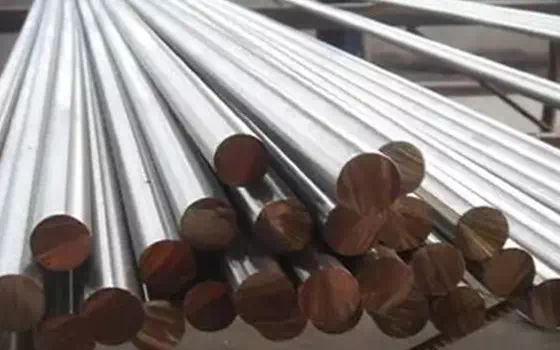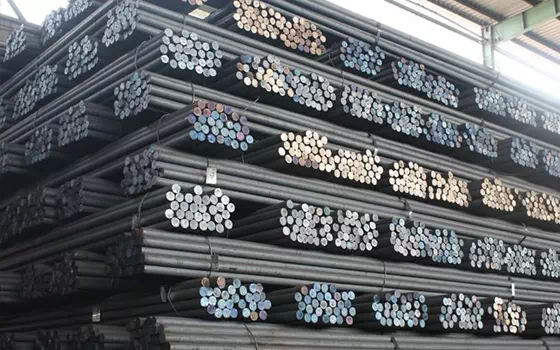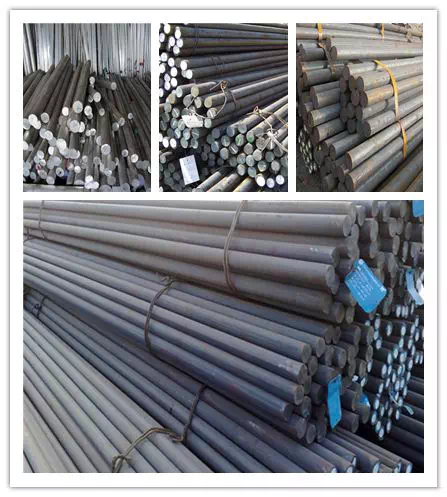Jan 10, 2024
What is the difference between low alloy steel and high alloy steel?
low alloy steel and high alloy steelI.
Get a free quote quickly!
Jan 10, 2024
low alloy steel and high alloy steelI.
low alloy steel and high alloy steel
I. Materials
One. Different ingredients
The carbon content of low-alloy steel is generally between 0.25% and 0.8%, and the proportion of alloying elements is less, and the content of these elements is generally less than 3%; The carbon content of high-alloy steel is generally 0.5%-2.0%, and the proportion of alloying elements is higher than 3%.
2. the hardness is different
Low alloy steel has a low hardness, generally can be forged to a hardness of 60HRC. The hardness of high alloy steel is higher, and the forging state can reach the hardness of 70HRC or more.

Two. Performance
1. the expansion rate is different
The elongation of low alloy steel is higher, generally reaching 25% to 45%, while the elongation of high alloy steel is very low, generally only 15% to 25%.
2. heat treatment performance is different
Low alloy steel belongs to the heat treatment process is more complex metal materials, usually three heat treatment, that is, tempering, quenching, tempering. High alloy steel is a metal material that is easier to heat treatment, and only two steps are carried out, that is, quenching and tempering.
Three. Scope of use
Low alloy steel is mostly used in machinery manufacturing, construction machinery and household appliances and other fields, can be used to manufacture blades, hinges, bearings and other parts, can also be used to manufacture shaft rims, pins, springs and other accessories.
2. high alloy steel
High alloy steel including stainless steel and alloy steel, they are often used in must be oxidation resistance and high corrosion resistance occasions, there are many forms, can efficiently meet the needs of users, for example: stainless steel can be used in greenhouses, to prevent the accumulation of moisture in the air corrosion; Alloy steel can be used to make heat and corrosion resistant materials such as pressure vessels.
conclusion
In short, low alloy steel and high alloy steel are not only different in composition, performance and scope of use, but also used in a variety of different fields. Therefore, in practical applications, we should choose the appropriate material according to the actual situation to achieve the best performance.
Low alloy steel and high alloy steel are different types of steel, which have different properties from each other and are commonly used materials in engineering and equipment. In this paper, high alloy steel and low alloy steel are compared and analyzed from the aspects of physical properties, chemical composition, application in heat treatment, corrosion performance and industrial application.

1. Physical properties
The plasticity, toughness and impact toughness of high-alloy steel are higher, which can ensure its reliability in heavy machinery and equipment (mainly high-speed taxi). High alloy steels also have higher tensile strength due to the presence of alloying elements. Low alloy steel absorbs slightly less energy than high alloy steel, but more energy than ordinary carbon steel. Low-alloy steels have slightly lower tensile strength, but are generally higher than ordinary carbon steels. In addition, the toughness and impact toughness of low alloy steel are lower than that of high alloy steel.
2. Chemical composition
In terms of composition, high alloy steel may contain a large number of alloying elements, sometimes as many as a dozen elements. These alloying elements mainly include manganese, chromium, molybdenum, cobalt, copper, chromium, niobium, vanadium and so on. These elements can improve the strength, hardness, heat resistance, corrosion resistance and weldability of steel. The content of low-alloy steel is usually low, with only a few alloying elements, of which acrylic elements are the most, generally not more than 1%.
3. Heat treatment
Because high alloy steel contains a large number of alloying elements, attention should be paid to the differences of elements during heat treatment. According to its special status, select a specific treatment process to ensure the stability of its structure and characteristics. If the analysis data shows that the low alloy steel will be greatly affected, so under the condition of high temperature, cooling measures should be taken to reduce the deformation of the structure.
4. Corrosiveness
The fusible nonmetallic interlayer of high alloy steel can effectively prevent corrosion and improve its insulation characteristics. Low alloy steel has fewer alloying elements, can be less corrosive, and is easy to oxidize in air.
5. Industrial applications
High alloy steel is mainly used in heavy machinery and equipment, such as construction machinery, metallurgical machinery and other equipment, they have good thermal strength and mechanical strength to meet industrial needs. The low alloy steel is mostly used in automobiles, agriculture, such as tractors, combine harvesters and other industrial equipment, easy processing and welding, but also can achieve good economic benefits and high production efficiency.
